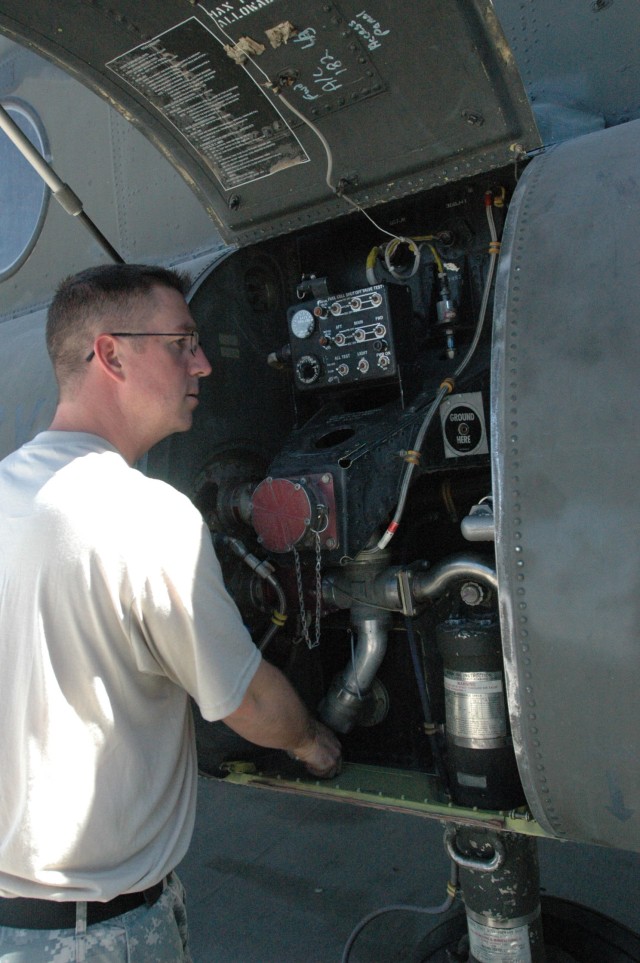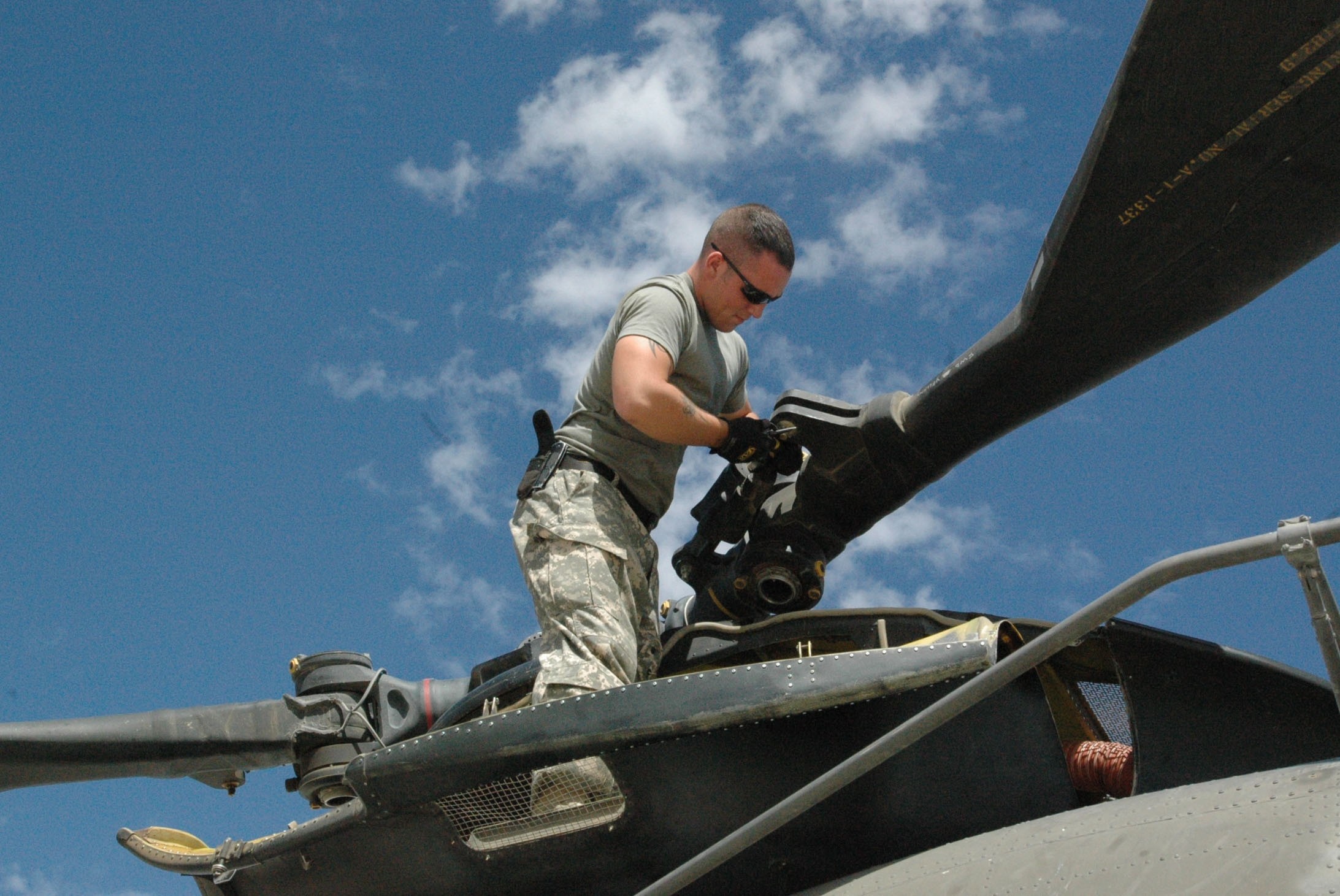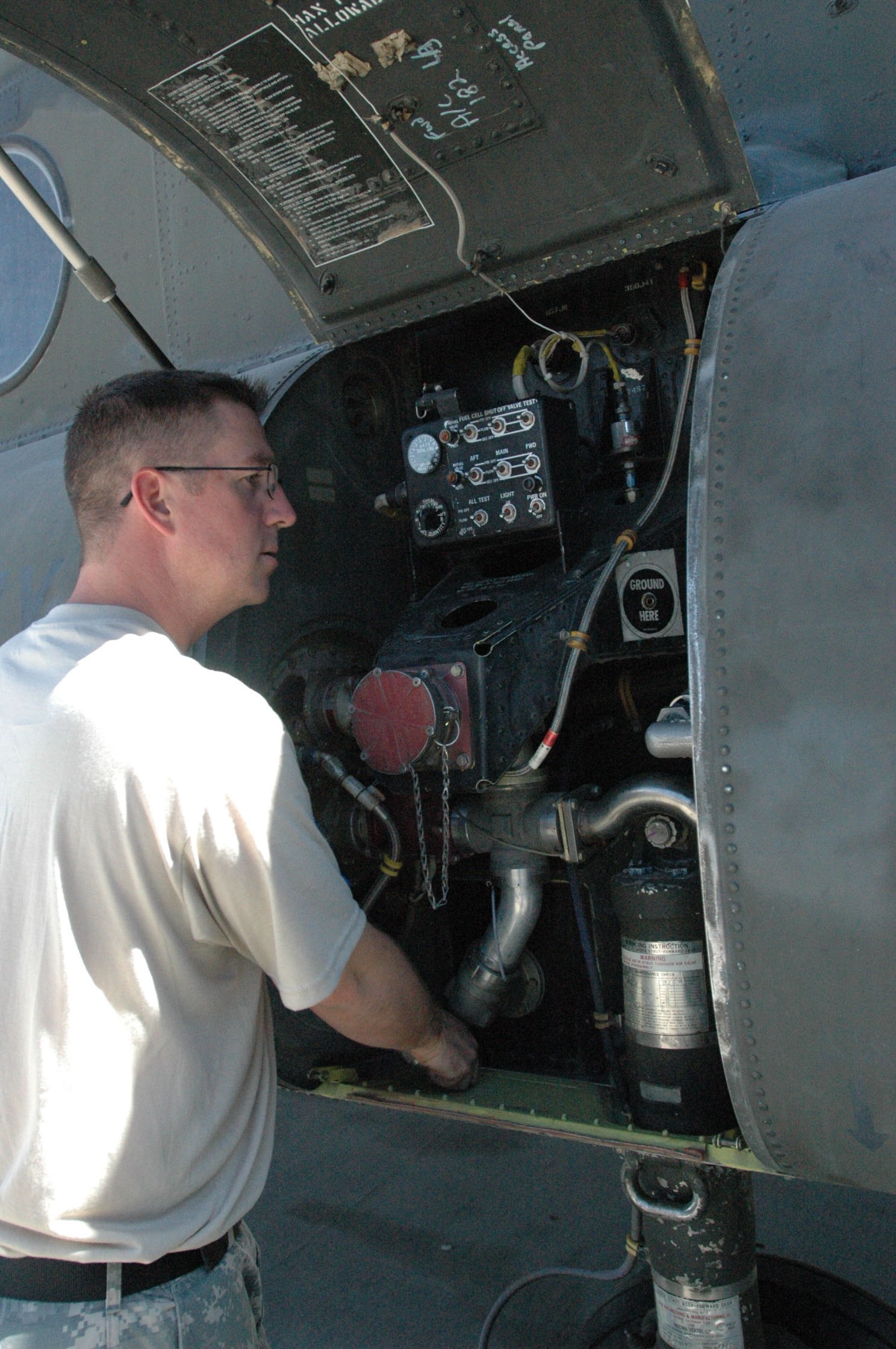BAGRAM AIRFIELD, Afghanistan - Just like you take your vehicle in every 3,000 miles for an oil change, tune-up and tire rotation, a military aircraft also need regularly scheduled maintenance to keep its performance at its peak.
For the CH-47 Chinook, maintenance is done approximately every 25, 50, and 100 flight hours. That's why Army Staff Sgt. Timothy McCauley and Spc. Justin Sessions, crew chiefs, Company B, 3rd-82nd General Support Aviation Battalion, 82nd Combat Aviation Brigade, made sure 'Lady Luck' was in on time for her appointment with the 'Raiders'.
"It's her scheduled maintenance time and to keep her in order, certain things need to be replaced. [Repairing] cracks or small faults are what [the Raiders] are good at," McCauley said.
"Over time, things can come loose because of the vibrations and hardware wears out that has to be replaced, so the aircraft is brought in, torn apart, repaired and put back together," said Sgt. 1st Class Donald Hamilton, maintenance platoon sergeant, Company D, 3-82nd GSAB, also known as the Raiders.
"We tear the aircraft apart - [remove] the blades, engines, and drop the transmission if necessary, and when it's all done, the technical inspectors, sheet metal [repairers], avionics come in and do their part," said Army Sgt. Jeffery Sherwood, Chinook mechanic, Co. D, 3-82nd GSAB. "It entails a lot of cross work from other sections."
The Chinook maintenance inspection process, or aircraft phasing, is about a 21-day process that includes the removal of aircraft blades, draining of all fluids, lubrication, brake disc assembly replacement, engine checks, aircraft part replacement and repair, and a good washing. Soldiers work around the clock when an aircraft comes in for inspection to ensure it is ready to return to the fleet as soon as possible. At any given time, up to seven CH-47's may be in various stages of phasing throughout the brigade.
"We check the entire aircraft, including the battery for serviceability and corrosion about every 90-180 days," said Army Sgt. Eric Reed, quality control NCO, Co. D, 3-82nd GSAB. "We check for cracks in the wheel housing, air frame structure, fuel lines, windows ... a crack in the right spot on the wrong part can cause a loss of aircraft."
The CH-47 Chinook is a versatile, twin-engine, tandem rotor heavy-lift helicopter, whose primary roles include troop movement, artillery emplacement and battlefield re-supply. Referred to as the workhorse of Afghanistan, every Chinook gets inspected twice a day and goes through major maintenance inspection every 100, 200 and 400 hours respectively.
"Our mission capability is the same no matter where we are, but environmental factors and the stress we put on the airframe drives the inspection and maintenance requirements," Reed said.
All the long hours and hard work put into getting the airframe ready for service pay off for the Soldiers involved as well as the customers who benefit from the Chinook's capabilities.
"Seeing [the aircraft] fly and knowing the pilots and crew are safe and I had a role in it is very exciting," said Spc. David Vaughn, Chinook mechanic, Co. D, 3-82nd GSAB.
"You take more pride in it after you put the work into it and then see it flying knowing you had a helping hand in it," McCauley said.
"The Chinook is the Cadillac of the fleet ... it's a beast," Hamilton said, "and we are the copter doctors' that keeps them healthy."




Social Sharing